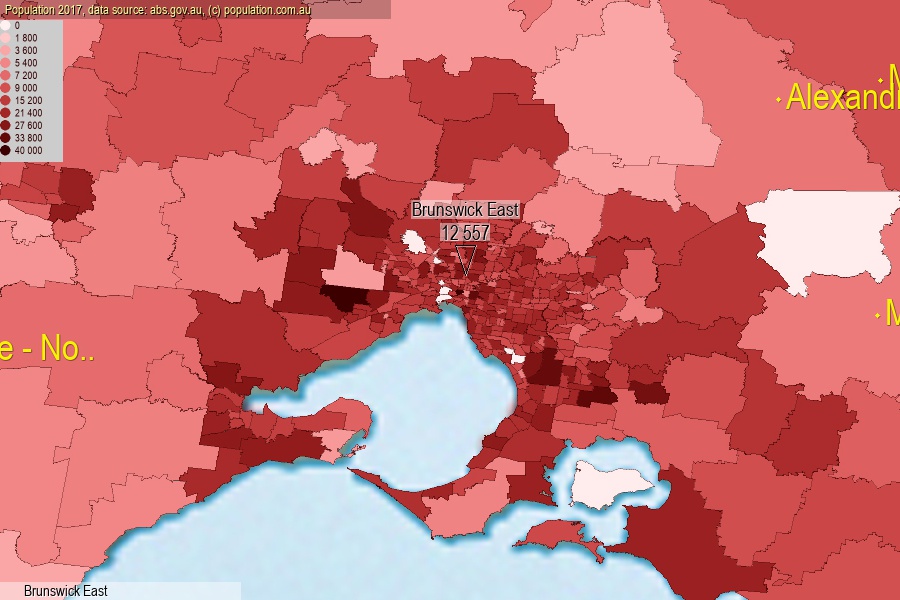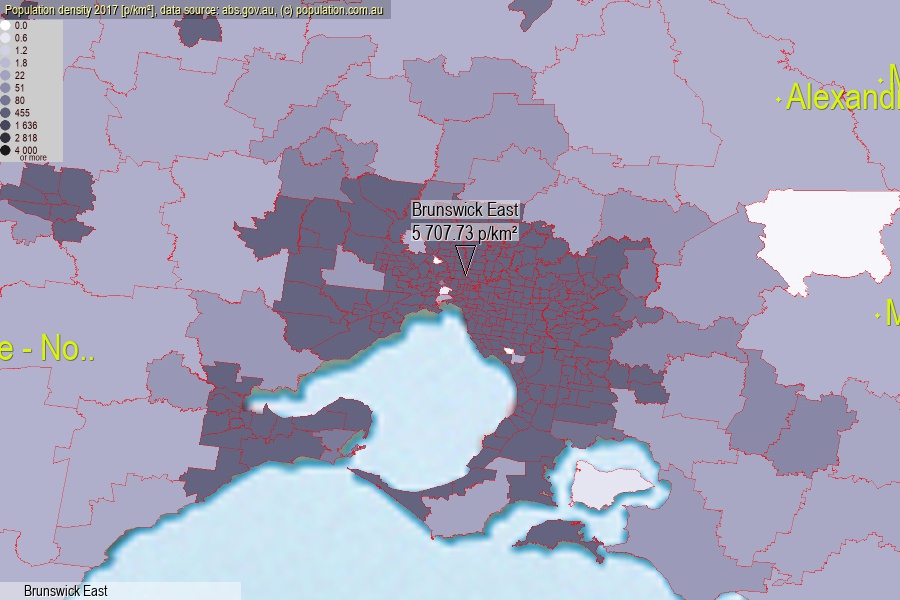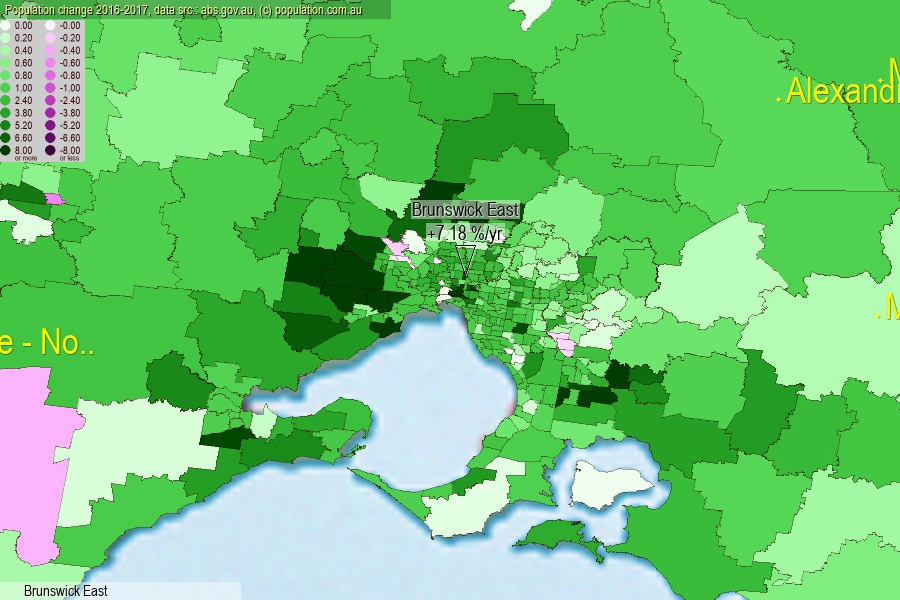 population.com.au
population.com.auLast official estimated population of Brunswick East (as Statistical Area Level 2) was 12 557 people (on 2017-06-30)[2]. This was 0.05% of total Australian population and 0.195% of VIC population. Area of Brunswick East is 2.20 km², in this year population density was 5 707.73 p/km² . If population growth rate would be same as in period 2016-2017 (+7.18%/yr), Brunswick East population in 2025 would be 21 864. [0]



Click to enlarge. Brunswick East is located in the center of the images.
Population [people], population density [p./km²] and population change [%/year] [2]
View borders » (new window) [4]
[1991-1992] +0.01 %/Yr.
[1992-1993] -0.26 %/Yr.
[1993-1994] -0.33 %/Yr.
[1994-1995] +0.58 %/Yr.
[1995-1996] +0.36 %/Yr.
[1996-1997] +0.04 %/Yr.
[1997-1998] +1.03 %/Yr.
[1998-1999] +1.18 %/Yr.
[1999-2000] +0.69 %/Yr.
[2000-2001] +1.30 %/Yr.
[2001-2002] +0.56 %/Yr.
[2002-2003] +0.34 %/Yr.
[2003-2004] +2.52 %/Yr.
[2004-2005] +1.92 %/Yr.
[2005-2006] +1.89 %/Yr.
[2006-2007] +3.27 %/Yr.
[2007-2008] +3.16 %/Yr.
[2008-2009] +3.28 %/Yr.
[2009-2010] +2.36 %/Yr.
[2010-2011] +2.01 %/Yr.
[2011-2012] +2.70 %/Yr.
[2012-2013] +7.19 %/Yr.
[2013-2014] +5.76 %/Yr.
[2014-2015] +5.97 %/Yr.
[2015-2016] +5.91 %/Yr.
[2016-2017] +7.18 %/Yr.
[0] Calculated with linear interpolation from officially estimated population
[1] Read more about SA2 and Australian Statistical Geography Standard (ASGS) on abs.gov.au
[2] Population data from Australian Bureau of Statistics (Population and density: 2017; change: 2016-2017)
[3] Digital Boundaries: Australian Statistical Geography Standard (ASGS) 2016.
[4] Border coordinates are simplifyed using Ramer-Douglas-Peucker algorithm.